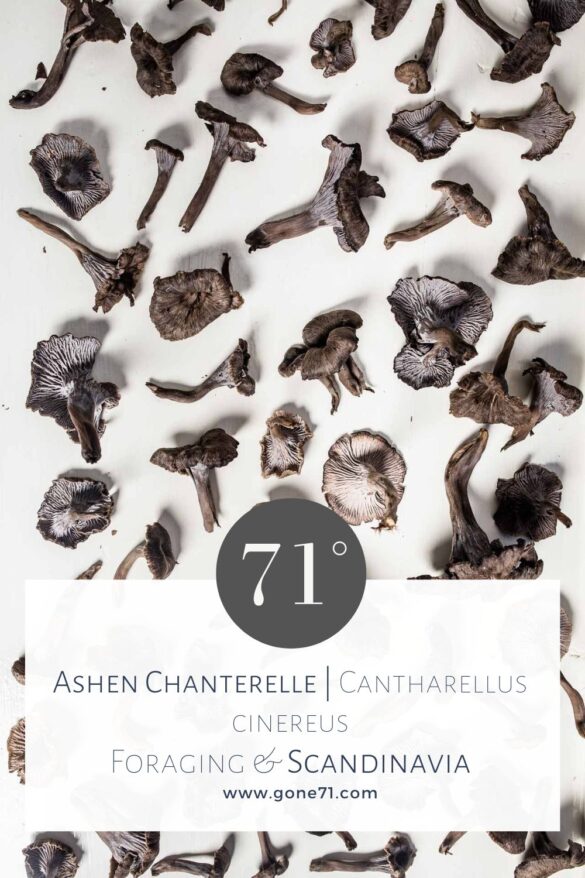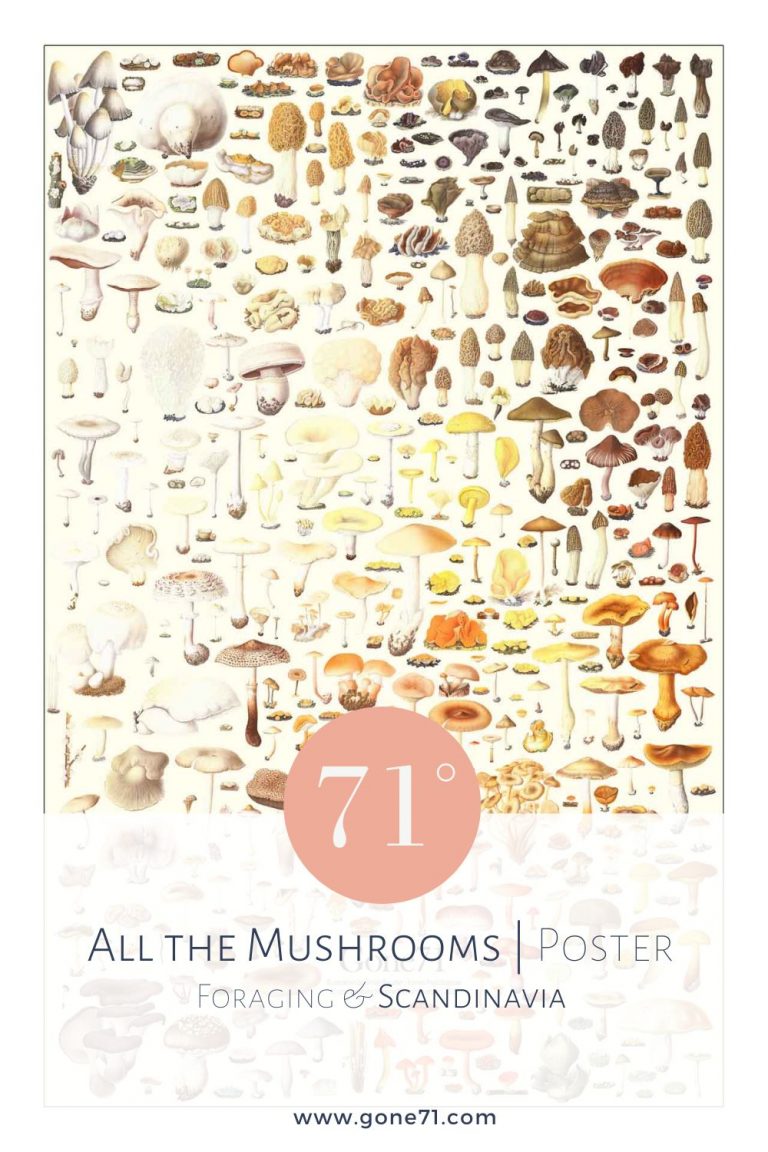swe.: grå kantarell | nor.: kokstrompetsopp | fin.: lehtovahvero, harmaa torvisieni | dt.: Grauer Leistling, Graue Kraterelle, Grauer Pfifferling
The ashen chanterelle is certainly one of the most inconspicuous mushrooms, and many people who collect black trumpets (C. cornucopioides) may have consumed some without knowing it. At first glance, these two species really do look confusingly similar. However, a closer look reveals an important difference: Ashen chanterelle have gills – black trumpets do not!
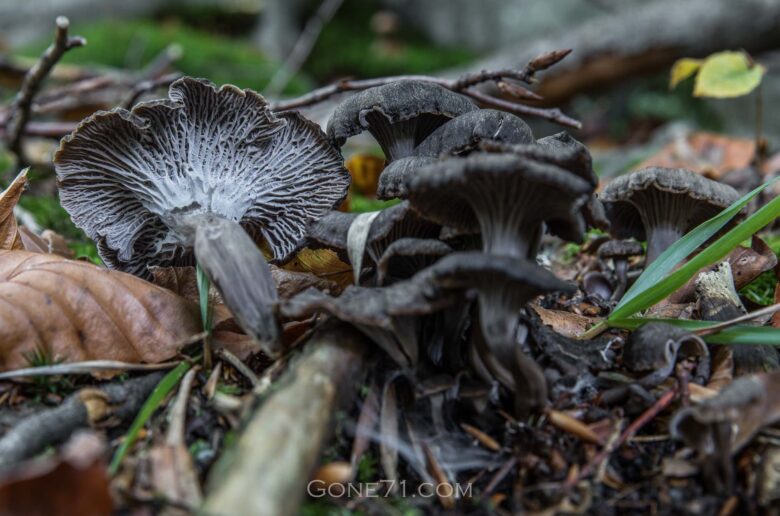
A recent encounter with ashen chanterelle (C. cinereus)
Recently I stood in an old beech forest in a huge field of black trumpets. Right in the middle, I noticed that there was also a relatively large amount of ashen chanterelles mixed in between. They stood right next to each other. Luckily, the ashen chanterelles are just as good, if not even better, edible mushrooms. They have a wonderful fruity smell and are just as suitable for risotto as they are for stews, soups or game dishes.
Only harvest mushrooms that you can identify with 100% certainty! The consequences can be life threatening if you are wrong. If you have the slightest doubt: do not eat the mushroom! This is not a mushroom guide! For correct identification consult a mushroom expert.
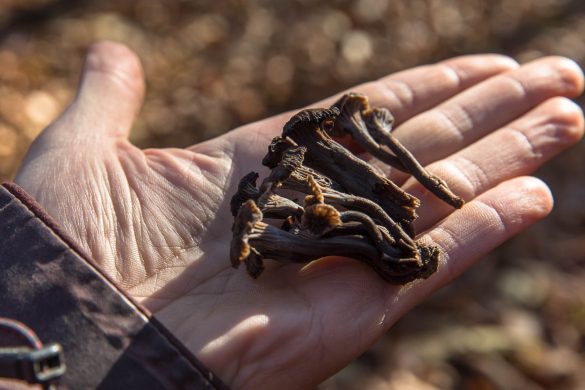
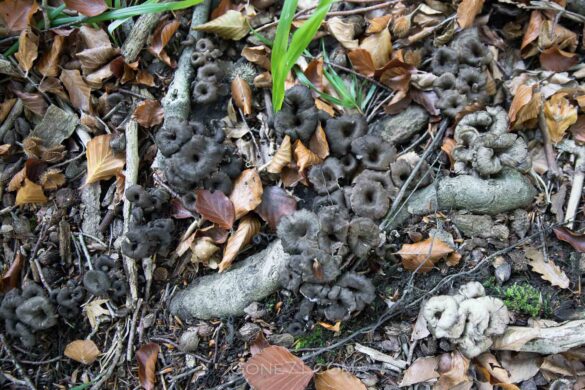
To find ashen chanterelles you have to know that they exist!
I think people only notice ashen chanterelle if they even know that these mushrooms exist. This may sound a little silly but once you have adjusted to the fact that these mushrooms are often very numerous and occur in a similar growth form to black trumpets, the probability of encountering them increases enormously. We now discover them very often, actually always in the same forests and at the same time of year as the black trumpets. They share a very similar growth habitat and favor the same weather conditions.
Once you’ve spotted some, it’s worth checking the surrounding area, as an ashen chanterelle rarely comes alone. They usually grow in clusters and sometimes cover relatively large areas of the forest floor. Often they are so inconspicuous that you literally have to watch where you put your next step.
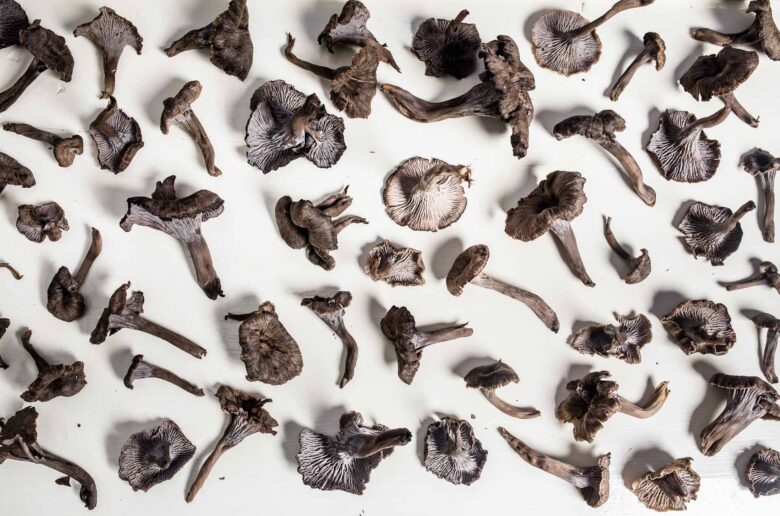
Appearance and habitat of ashen chanterelles
The shape and greyish-black color of the fruiting bodies are reminiscent of black trumpets (Craterellus cornucopioides). Ashen chanterlles do not have a smooth surface on the underside, but rather clear gray ridges (gills). The fruiting body grows between 2 and 8 cm in diameter. Raw, they have a mild taste.
The main season for ashen chanterelles is from September to October where it can appear in big groups mainly in deciduous forests. We find them mostly in company of beeches. In Scandinavia it is relatively rare but there are places in Central Europe where you can find them frequently during autumn.
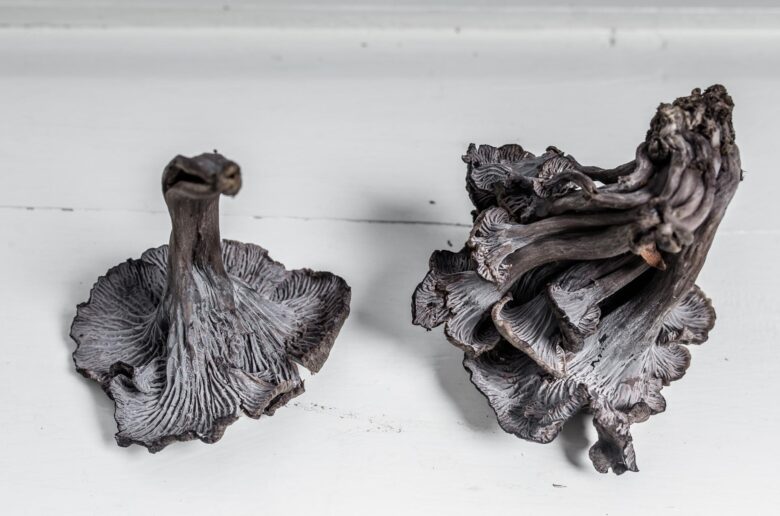
diameter: 2-8 cm
months: August – November
colours: grey, black
habitat: deciduous forest, beech
smell: fruity, pleasant, like plum
taste (raw): pleasant
consumption: cooked
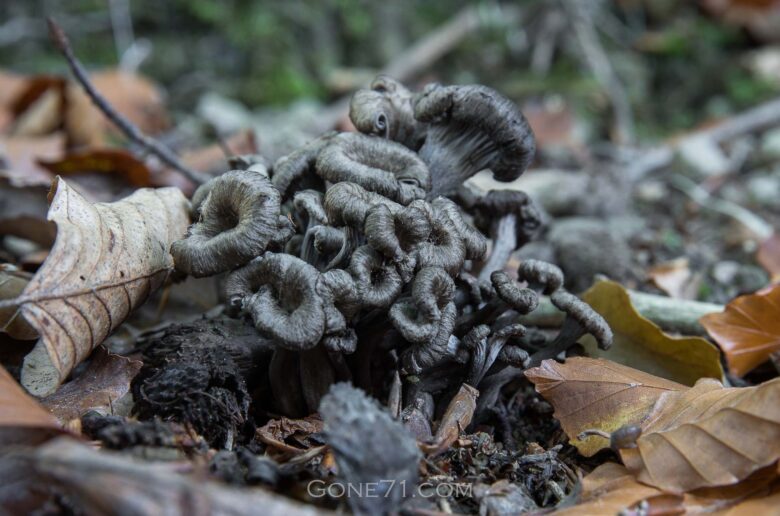
Confusing ashen chanterelles with other species
Ashen chanterelle are usually confused with black trumpets (C. cornucopioides) but can also be mistaken with Pseudocraterellus undulatus (edible) or Faerberia carbonaria (not tasty but considered “edible“). Non of these lookalikes are poisonous and the former two are considered equally delicious in taste.
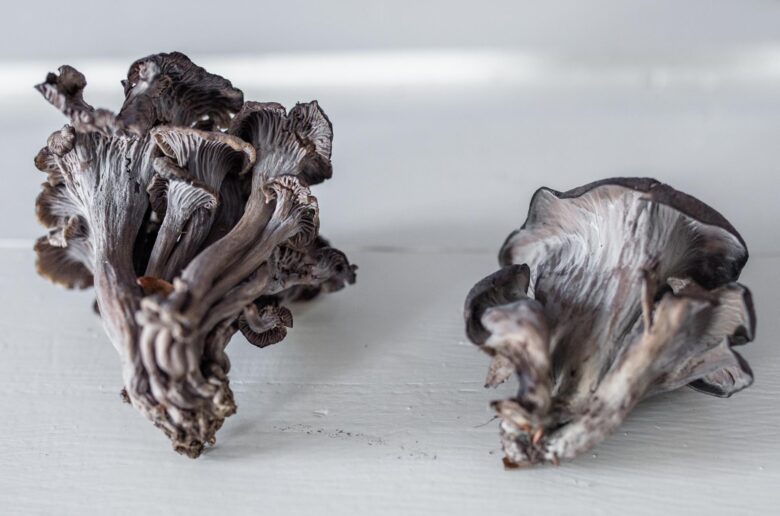
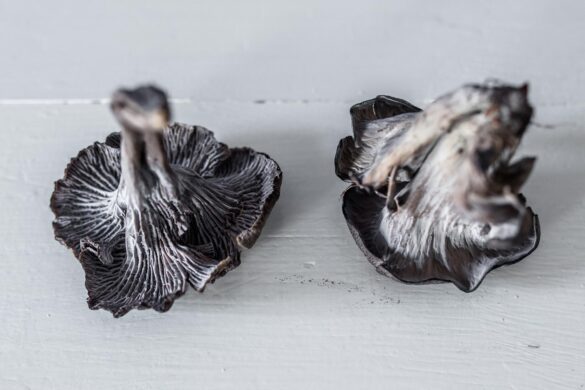
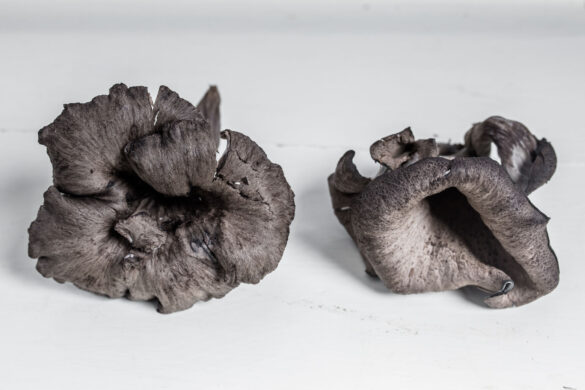
Ashen chanterelles in the kitchen
Ashen chanterelles are excellent mushrooms for soups, sauces and mixed mushroom dishes. You can use them similar to black trumpetes but they are slightly different in taste and have a pleasant fruity note to them.
If we have the choice, we even prefer these mushrooms over black trumpets. It is always a great pleasure for us to find Ashen chanterelles and they are often used in several mushroom dishes at the same time. In this recipe we prepared them in a mushroom rice similar to risotto. The dark mushrooms give the food a strong contrast and are ideal for use in a single-variety mushroom dish.
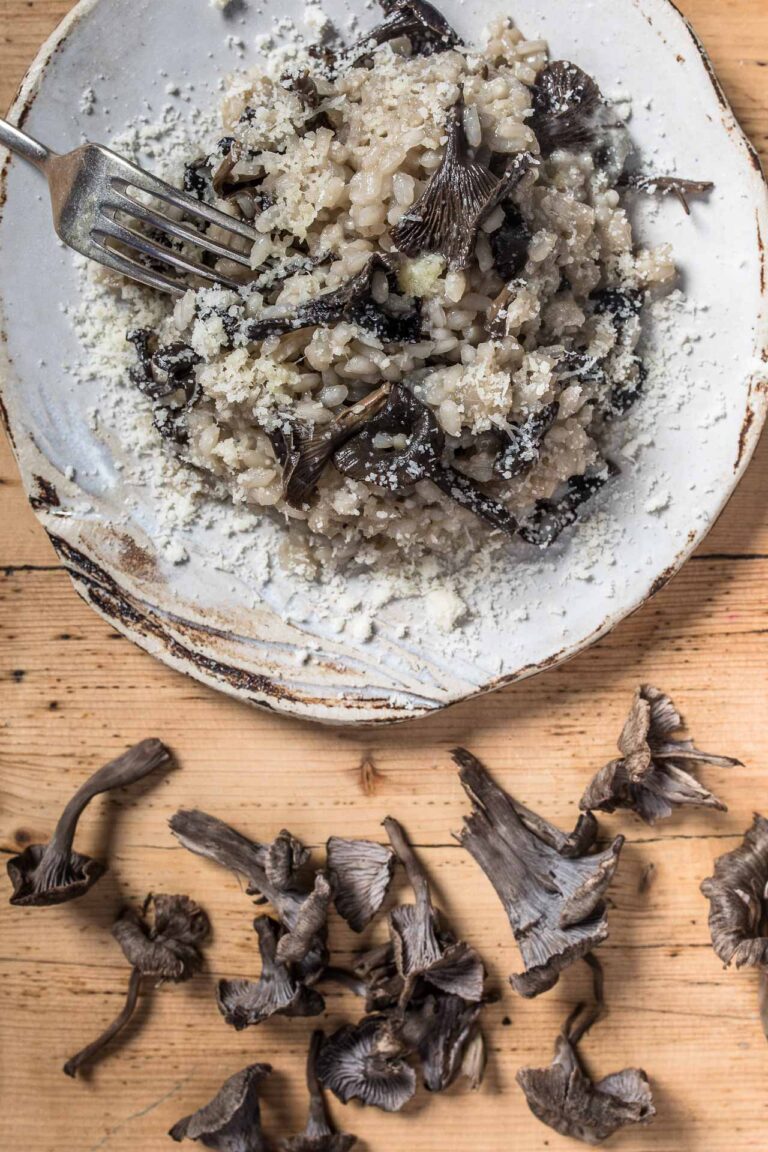
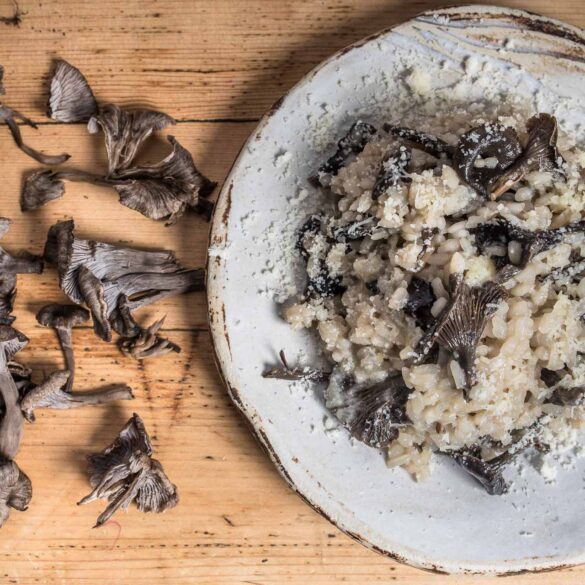
Ingredients
- 200g fresh ashen chanterelle
- 300g rice
- 1 small onion
- 100 ml white wine
- 1l vegetable broth
- olive oil
- salt, pepper
- 100g grated parmesan
Instructions
- Clean the mushrooms. It is best to split it in half to check the inside of the funnel for insects and dirt.
- Chop the onion and sauté briefly in a pan with olive oil.
- Add the rice and leave briefly on the stove together with the onions.
- Deglaze with white wine and pour in vegetable broth.
- The rice should be just covered with liquid. Let simmer while stirring constantly.
- After about 5 minutes carefully add the mushrooms.
- Pour in vegetable broth as needed. Season with salt and pepper.
- Finally, stir in 2/3 of the Parmesan.
- The rest is sprinkled over the dish when serving.
As soon as the rice is done, you can start eating - enjoy this delicious autumn dish.
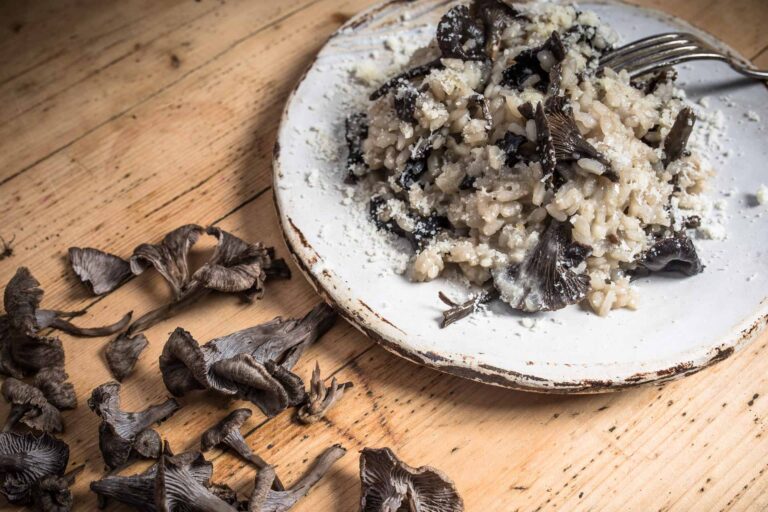
We have compiled this overview with the best of knowledge and belief, but do not claim to be complete and reserve the right to make errors.
Learn more about poisonous mushrooms and mushroom poisons here
↓↓↓
Find some inspiration in other mushroom recipes
↓↓↓
